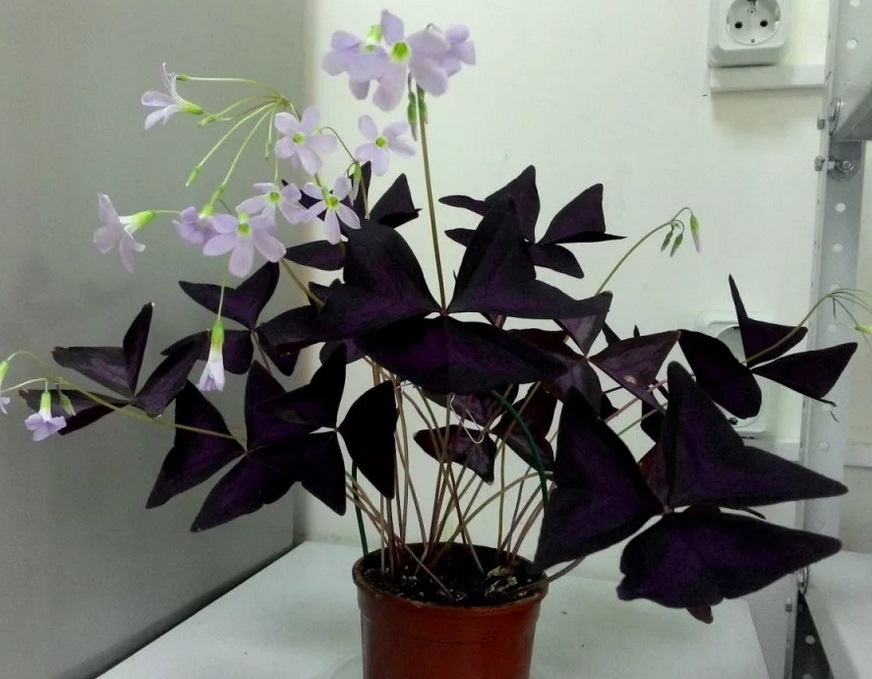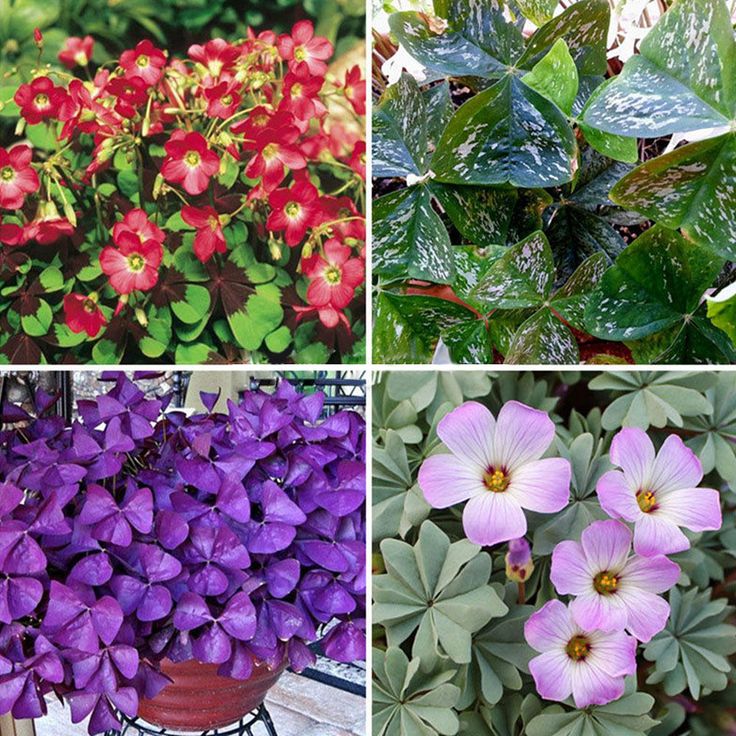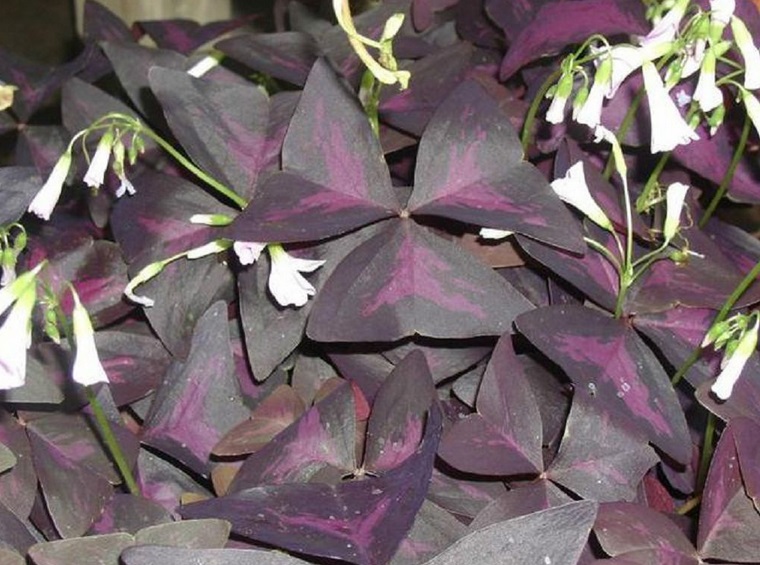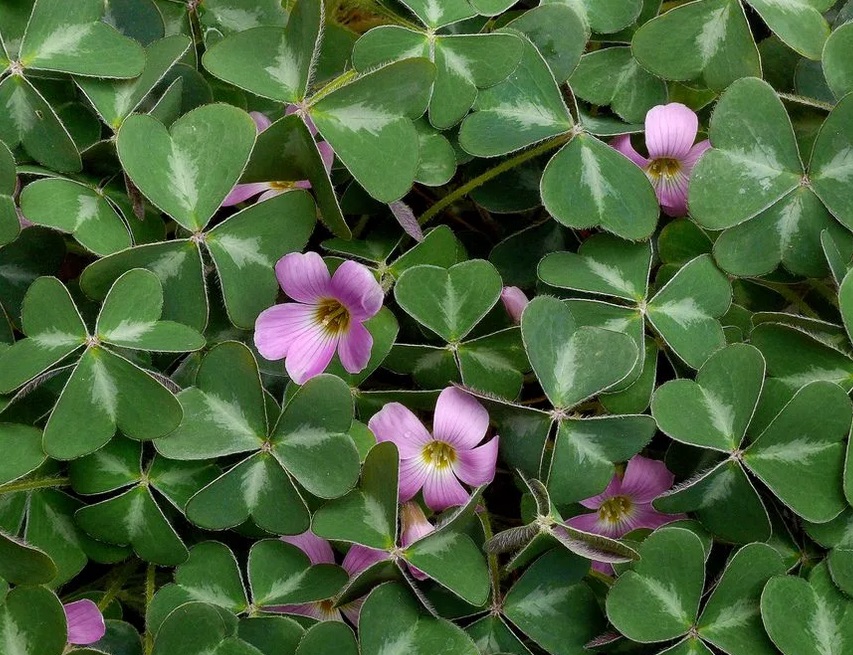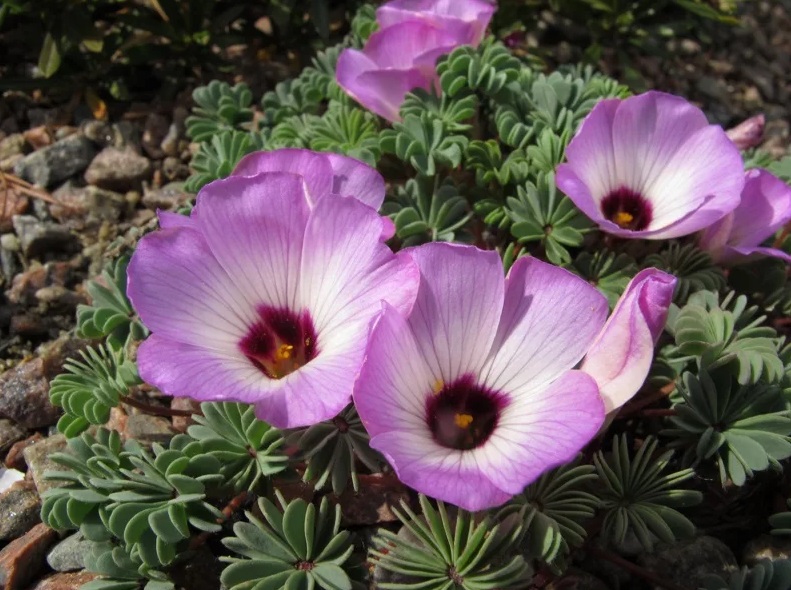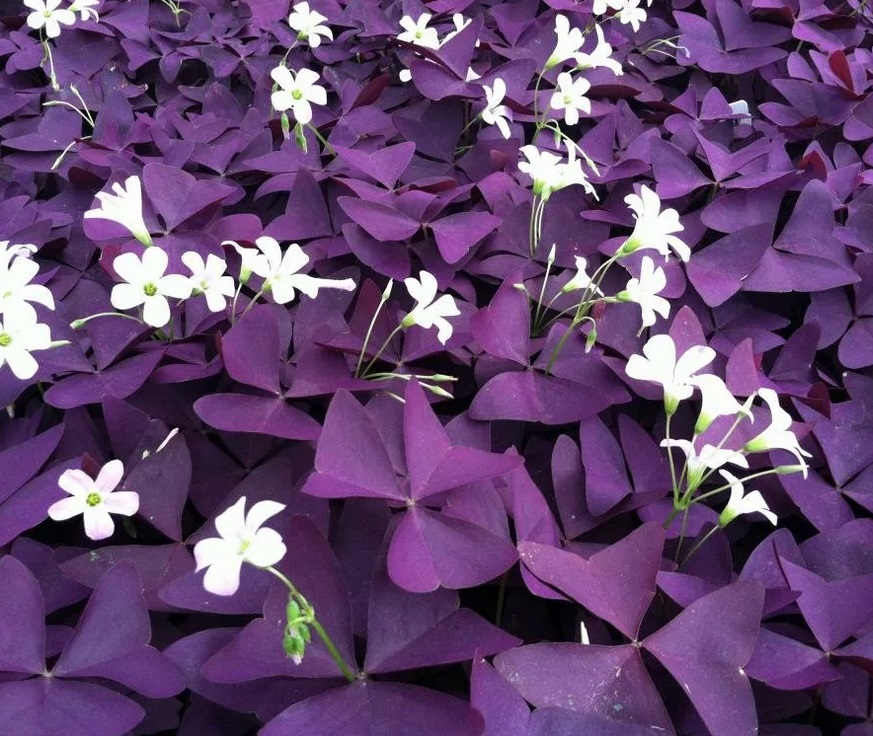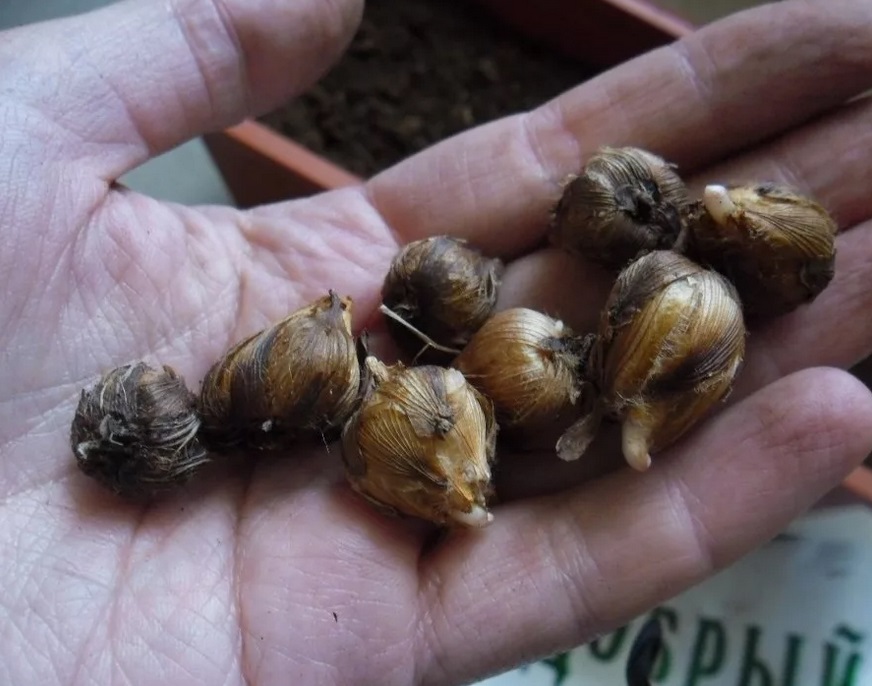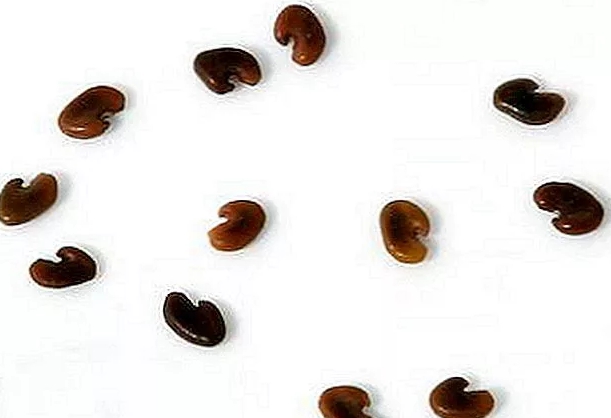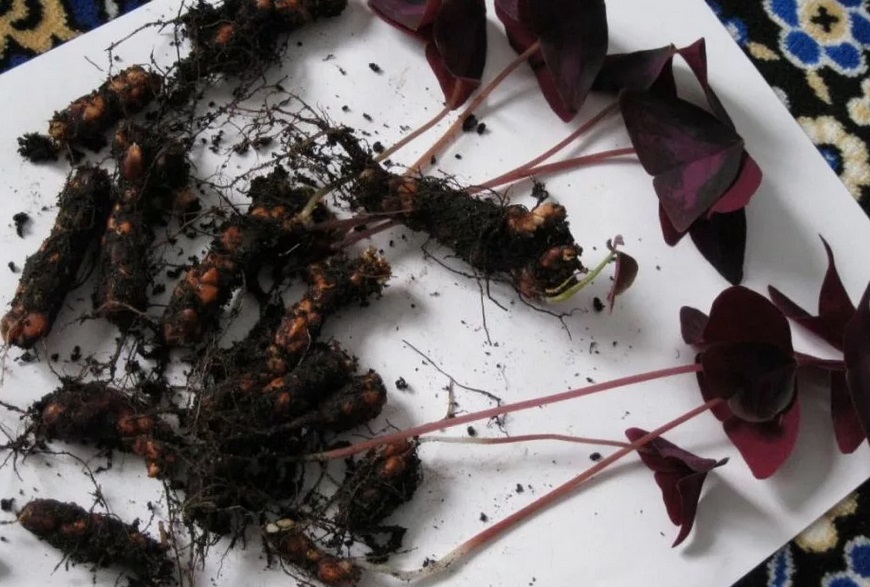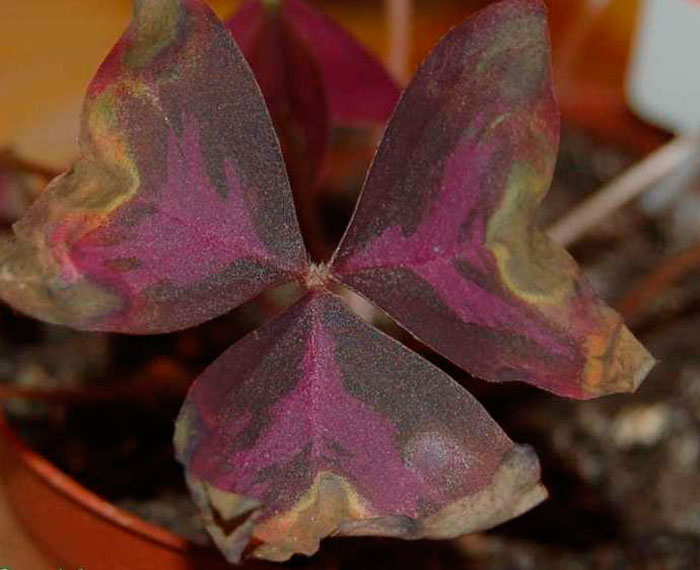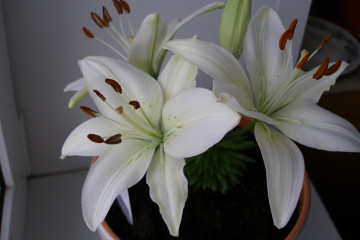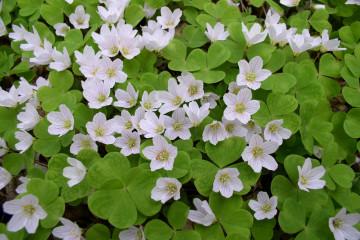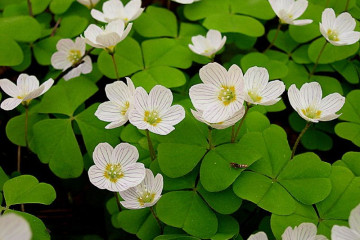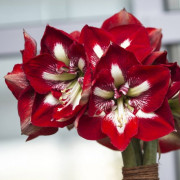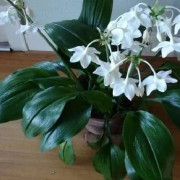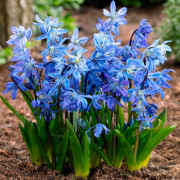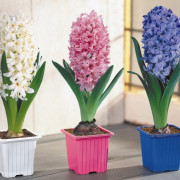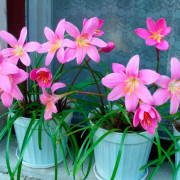Room acid - how to grow at home
Content:
Room acid grows on almost all continents. Especially the southern subtropical and tropical parts of the planet should be highlighted, where it is abundant. The culture is actively used in cooking, since the plant contains oxalic acid.
Room acid - what kind of flower is it?
In Russia, sour cherry is called hare cabbage, sour clover, clover of happiness. These are far from all the names of this useful indoor plant.
Oxalis or oxalis is a tuberous or bulbous plant of extraordinary beauty with delicate flowers and leaves that resemble clover leaves.
Basic information about the plant
The Latin name of the culture comes from a combination of two words: "Oxys" - spicy, sour and "Als" - salt. This word was used to describe the specific aroma of leaves that contain oxalic acid. Belongs to the Kislichny family, which has more than 800 species of annuals and perennials. They can be found in South / Central America, Africa, Central Europe.
Oxalis flowers are small purple, yellow, pink or white, in some varieties they are bicolor. The color of the leaves located on thin petioles, depending on the species, varies from light green, silver to brown-red, as well as a dark purple tone.
The leaves of the sorrel are curly, divided into three or four parts. There are plants in which the leaves are divided into five, six or nine parts, but there are fewer of these. Even less common are sourwood specimens, the leaves of which are divided into 15-19 lobes, which gives the rosette a unique futuristic look. Leaves keep on long thin petioles. They are arranged in a circle and very much resemble the wings of butterflies. Shoots are collected in a bush. When there are many of them, the bush is lush and attractive. The leaves are not only green in color, but also orange-red, purple, violet. Some are distinguished by the variegated color of the leaf surface.
Popular varieties of acid sour for home cultivation
Violet oxalis is very diverse. There are more than 800 of its varieties.
Triangular oxalis
Heat-loving plants for home growing are distinguished by large dark purple leaves with a lighter center. Each petiole has 3 angular plates. Small light pink flowers are collected on long flexible peduncles in loose inflorescences.
Cup-shaped oxalis
It is a three-leaved species with light green leaves and dark pink flowers.
Ferruginous oxalis
The popular garden plant forms a dense flowering bush only 8 cm high and up to 15 cm in diameter. The gray-green oval leaves are quite remarkable.On each petiole there can be 9-22 segments folded in a fan. In June-July, large white-silvery flowers bloom with a pinkish mesh of veins on the inner surface.
Purple oxalis
Oxalis burgundy oxalis is distinguished by pubescent, rounded leaf plates. The leaves reach 7 cm in diameter. They are collected in rosettes of eight pieces. With proper care, oxalis flowers come in white or bright pink shades.
Growing sour cherry at home
Indoor purple oxalis is very popular among domestic cultures, the care of which is not at all difficult. The main thing is to choose the right location for the plant and provide it with a suitable temperature.
How to provide proper oxalis care at home
Of particular interest is the plant's response to sunlight. Its movement occurs due to a change in pressure in the cells of the leaves at their base. That is why the leaves of the sorrel are folded closer to the night, and then they become like small butterflies. They open again with the appearance of the sun. The slow motion of the folding leaves is fascinating.
Illumination and temperature conditions
The plant requires a certain amount of sunlight, but not too bright. Therefore, eastern or western window sills are suitable for them. It is necessary to take into account the fact that direct sunlight can burn the leaves. However, the lack of light can negatively affect the growth of the petals - they will not have a saturated color.
The best temperature range is around 20-25 ° C in summer and 17-20 ° C in winter. It is worth noting that the coolness prolongs the flowering of the plant.
Watering rules and humidity
Oxalis is an indoor home flower that requires regular and moderate watering. But it can easily withstand waterlogging of the soil.
Top dressing and soil quality
Since the ornamental plant blooms constantly, it requires weekly feeding. It is necessary to feed this plant only during flowering, and also when a period of active growth is observed - once every 2 or 3 weeks. Complex mineral fertilizer is excellent for this (use 1/2 of the recommended dose).
The culture does not impose any special requirements for the quality of the soil.
Flowering and dormant period
Flowering begins in May-June and lasts until the end of summer. The culture throws out an arrow, towards the end of which delicate 5-leafed 4-5 flowers appear.
As a rule, triangular oxalis, like other tuberous species, has a pronounced natural rest period and a forced one, under unfavorable growing conditions. The natural resting phase usually occurs after flowering, in late autumn. In Oxalis triangularis varieties with green foliage, the dormant period lasts 2-3 months, and in purple about a month.
The ground part gradually dries up and dies off. It is recommended to cut dry stalks with flower shoots short, and move the pot to a cool place with low light levels. Watering is rare, while making sure that the earthen lump does not completely dry out.
Methods for breeding acid at home
Acid is propagated by sowing seeds, tubers and cuttings.
From bulbs (tubers)
Most often, a houseplant called oxalis is propagated by bulbs or tubers that grow near the old rhizome.
In autumn, when the ground part dies off, you can dig out the nodules from the soil.From the beginning of March, pots are prepared with loose garden soil mixed with sand. Each container can hold up to 10 nodules. They are planted to a depth of about 1 cm. The tubers are kept in a cool (+ 5 ... + 10 ° C) place for several weeks. Moisten the soil with great care. By the end of March, the temperature rises.
You can transplant 5-10 bulbs (tubers) into one flower pot. If you take proper care of the plant, then it develops quickly enough.
For growing at home, you can plant tubers at any time of the year. If you land in the last decade of October, then a lush bush will already form by the New Year.
From seed
Seeds are sown in the spring directly into open ground. After 1.5-2 weeks, seedlings will appear. All this time, the plants need to be constantly sprayed. For growing crops, small pots are selected with a special soil of sand, peat and humus. Initially, the seedlings form leaf rosettes that grow the rhizome. Denser bushes with flowers can be observed from the next year of life.
From cuttings
Cuttings of sour cherry should be rooted in moistened sand and kept at a temperature of about 25 degrees. After about twenty days, they can be planted in separate pots.
Oxalis diseases and other growing problems
Leaf spot is a general term for several similar fungal diseases. Its main symptom is the appearance of red, purple-brown, brown or black spots on the leaves. Their size varies depending on the type of fungal spores. The leaves turn yellow and then fall.
Infectious chlorosis is common. Its symptom is yellowing caused by nutrient deficiencies. Also, the disease is characterized by the appearance of yellowish rings or stripes on the leaf plate, which eventually merge, darken, and the leaf itself dries up.
Leaf rust is another fungal disease that is characterized by the appearance of yellow or yellowish orange spots and bumps.
Gray mold is a fungal infection that infects flowers, stems, and leaves of many plants, including purple sour. Symptoms can vary, but a common occurrence is a fuzzy, whitish-gray mold that grows on the surface of leaves and other affected parts. Small, yellow or brown spots appear on the leaf blades, which gradually increase. Infected stems become watery, soft and rot at soil level.
In most cases, problems can be solved by applying insecticides. In especially neglected situations, you will have to destroy the flower.
Of the pests, spider mites can be affected, which are destroyed with the help of insecticides.
In the presence of weak cuttings with small leaves, you need to think about increasing the level of lighting, as well as possible excessive humidity. If the leaves lose their brightness, then you should choose a place with good light. When rhizomes, nodules and onions rot, you must stop watering them often.
Indoor oxalis flower not only pleases the eye with its unusual leaves, similar to tropical butterflies, but is also quite suitable for eating. Caring for him is simple. In gratitude for it, the culture will bloom for a long time.

